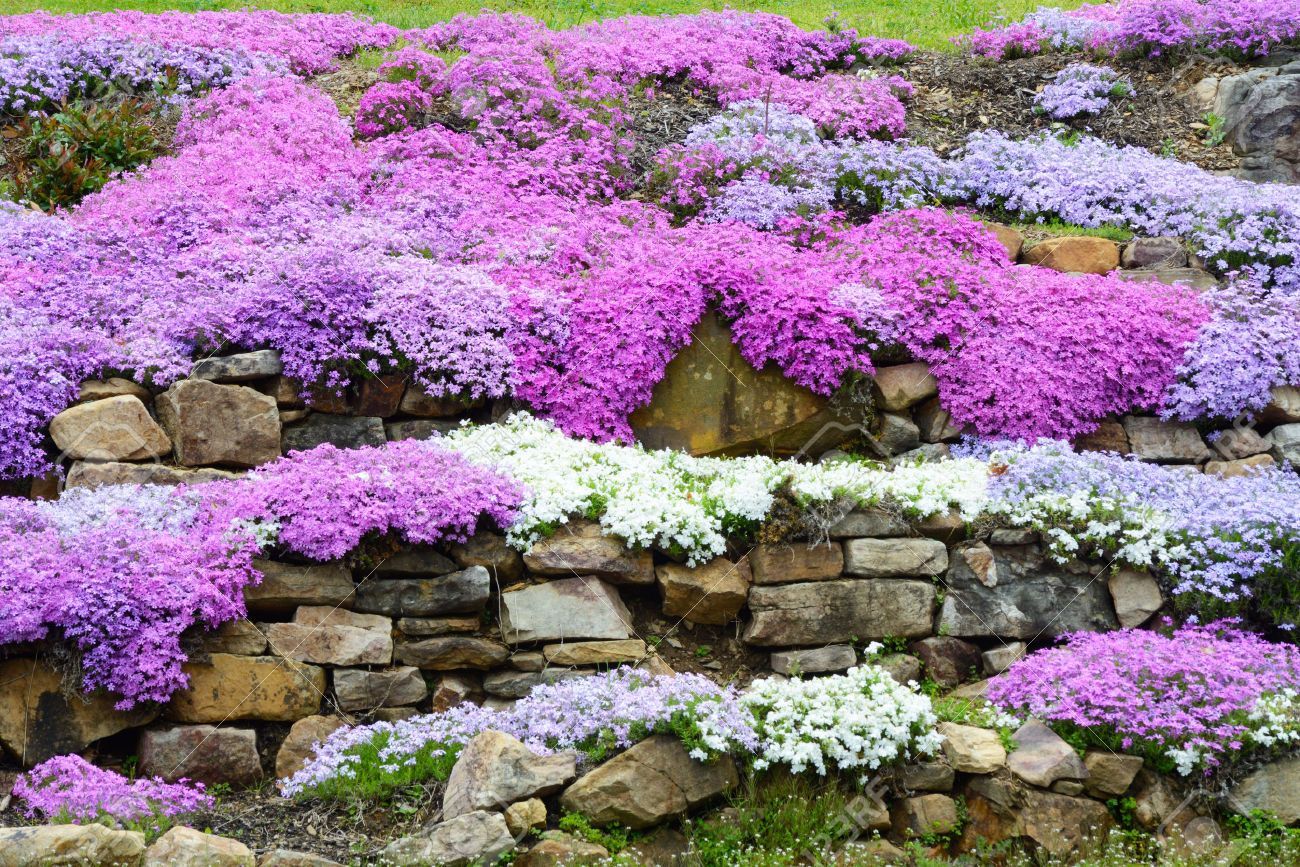Phlox subulata, also called Creeping Phlox or Moss Phlox, is a popular evergreen to semi-evergreen perennial plant that is loved for the bright, blanket-like flowers it produces in the spring. This little plant comes from the eastern and central United States. It has many great qualities that make it a great choice for landscaping.
With its carpets of bright blooms in spring and summer, creeping phlox (Phlox subulata) is a popular garden plant. But choosing the right companion plants is key to highlighting its best features. The right plant partners can complement creeping phlox’s flowers and growth habit.
In this article, we’ll explore some of the top companion plant options for creeping phlox. Discover combinations that will help your phlox thrive while creating an attractive garden display.
Why Grow Creeping Phlox?
Here are some of the benefits of this classic perennial groundcover:
-
Profuse blooms in spring and early summer
-
Thrives in full sun to light shade
-
Spreads to form lush weed-suppressing carpets
-
Brilliant flower colors like pink red. blue purple and white
-
Attracts butterflies and pollinators
-
Tolerates heat, humidity, and drought when established
-
Evergreen foliage in warmer zones; semi-evergreen elsewhere
With proper siting and care, creeping phlox is an easy-care groundcover that brings color impact to gardens and landscape beds
Choosing Companion Plants for Creeping Phlox
When selecting companions, look for plants that:
-
Complement phlox’s growth habit and flower shapes
-
Bloom at different times to extend color
-
Have similar site and care needs
-
Offer color and foliage contrasts for visual interest
-
Attract pollinators
-
Help control erosion on slopes
Combining creeping phlox with other plants that meet these criteria results in an attractive, cohesive display.
Best Perennials to Plant with Creeping Phlox
Many perennials pair beautifully with creeping phlox. Some top options include:
-
Catmint (Nepeta) – Purple blooms complement phlox colors
-
Coreopsis – Cheery yellow flowers contrast nicely
-
Culver’s Root (Veronicastrum) – Tall spikes add height
-
Lady’s Mantle (Alchemilla) – Chartreuse frothy blooms
-
Lavender – Similar growing needs and purple flowers
-
Ornamental grasses – Add movement and texture contrast
-
Purple Coneflower (Echinacea) – Striking daisy-like blooms
-
Russian Sage (Perovskia) – Airy blue flower spires
Best Annuals & Biennials to Combine with Creeping Phlox
Annuals and biennials add seasonal variety when planted with creeping phlox. Consider:
-
Pansies – Early season color in blue, yellow, pink
-
Poppies – Cheerful red, orange, yellow, or white blooms
-
Snapdragons – Vertical spikes in many colors
-
Violas – Pro fuse blooms over long season
-
Foxglove (Digitalis) – Towers of tubular flowers
-
Sweet William (Dianthus barbatus) – Fragrant pinks, reds, white
-
Sweet Alyssum – Dainty white flowers; great for edging
Best Shrubs & Trees as Creeping Phlox Companion Plants
Some small shrubs and trees also complement creeping phlox nicely:
-
Dwarf conifers – Add evergreen structure and height
-
Azaleas & Rhododendrons – Early spring blooms
-
Potentilla – Long bloom season in yellows, whites, oranges
-
Spirea – Feathery pink or white spring blooms
-
Dwarf crape myrtles – Elegant summer flowers in shades of pink
-
Japanese maple – Delicate foliage and form
Design Tips for Incorporating Creeping Phlox
Follow these tips when including creeping phlox in garden designs:
-
Mass it in drifts or swaths for best visual impact
-
Use it to trail down slopes, cascading over walls and ledges
-
Plant around stepping stones, boulders, and garden ornaments
-
Edge flower beds and pathways
-
Grow in rock gardens and sunny mixed borders
-
Feature in containers and hanging baskets
-
Combine with spring bulbs like tulips, daffodils, crocus
Caring for Creeping Phlox as a Companion Plant
To keep your creeping phlox looking its best alongside other plants:
-
Provide full sun to light shade
-
Amend soil with compost or organic matter to improve drainage
-
Water regularly when first planted, 1-2 inches per week
-
Cut back spent flower stems after bloom
-
Divide congested plants every 2-3 years in spring
-
Watch for powdery mildew and treat promptly if found
With the right companion plants and care, creeping phlox will thrive and enhance gardens with its vibrant floral carpet. Experiment with combinations to find your perfect phlox partners!
What Should I Grow Creeping Phlox?
There are several compelling reasons to grow this wonderful little plant in your garden:
- Amazing Blooms: In the spring, creeping phlox makes a beautiful carpet-like display of star-shaped flowers that really steals the show.
- Groundcover: Because it grows slowly, it’s a great choice for groundcover. It quickly fills in gaps, which keeps weeds down and stops soil erosion.
- Easy to Maintain: Once established, Phlox subulata requires little care. It can handle drought and doesn’t care much about the soil, but it does like it when it drains well.
- Brings in Pollinators: Creeping phlox is a great plant to use if you want to get butterflies, hummingbirds, and other pollinators to visit your garden.
- Versatility: Creeping phlox is great for many landscaping tasks, such as rock gardens, border fronts, edging, and as a pretty carpet over bulb beds.
- Deer and Rabbit Resistance: No plant is completely safe from deer and rabbits, but Creeping Phlox is usually not hurt by these common garden pests.
- Seasonal Interest: It blooms in the spring, and its evergreen needle-like leaves make the garden look interesting all year long.

Garden Design with Creeping Phlox
Creeping Phlox, or Phlox subulata, can be an important part of garden design because of its carpet-like, bright flowers and evergreen leaves. Here are some ideas on how to incorporate it into your garden:
- Rock Gardens: Creeping phlox does best in soil that drains well and is a great choice for rock gardens because it can grow over rocks and show off their shapes.
- Borders and Edges: Phlox subulata can be used to line paths or flower beds. When compared to the greens and other colors in your garden, the bright colors look stunning.
- Slopes and Banks: Creeping phlox is a good ground cover for slopes and banks because it stops soil erosion and looks nice at the same time. It also requires less maintenance in these hard-to-reach areas.
- Containers: Creeping phlox is usually found in gardens, but it can also be used in hanging baskets or containers where it will spill over the edges for a beautiful look.
- Wildlife Gardens: Because it attracts pollinators, Creeping Phlox should be used in a garden that is good for wildlife or pollinators.
- Carpet Bedding: To make bright designs that look like carpets, use different colors of creeping phlox. This method is called “carpet bedding,” and it can make a big difference in large landscapes.
Ultimate Companion Plants for Creeping Phlox
FAQ
Can you plant creeping phlox with other plants?
What plants look good with phlox?
Does creeping phlox choke out other plants?
Where is the best place to plant creeping phlox?
Is creeping phlox a perennial?
(My 9 Top Picks) Creeping Phlox is a popular perennial flowering plant that can be joined by other plants to enhance the beauty of your garden and landscape.
What plants can be planted with creeping phlox?
Some plants that can be planted with Creeping Phlox include Grape Hyacinth, Triandrus Daffodils, Rock Cress, Basket-Of-Gold, Snow in Summer, Heartleaf Bergenia, Cushion Spurge, Summer Snowflake, Evergreen Candytuft, Lamb’s Ears, Botanical Tulip, and Star Of Bethlehem.
Is creeping phlox deer resistant?
Versatility: Creeping Phlox is excellent for a variety of landscaping uses, including rock gardens, border fronts, edging, and as a lovely carpeting over bulb beds. Deer and Rabbit Resistance: While no plant is entirely deer or rabbit-proof, Creeping Phlox tends to be resistant to these common garden pests.
What are the best Phlox companion plants?
With chives 5, parsley, and thyme, we bring our list of the greatest phlox companion plants to a close. Phlox pairs well with several herbs. They typically grow slowly so as not to crowd out the blooms and are simple to weed. Just a few of the herbs that blend well together in your garden are chives, parsley, and thyme.
- The Ultimate Guide to Growing Strawberries in Raised Beds - August 8, 2025
- No-Dig Garden Beds: The Easiest Way to Grow a Beautiful Garden - August 6, 2025
- How to Protect and Preserve Wood for Raised Garden Beds - August 6, 2025

